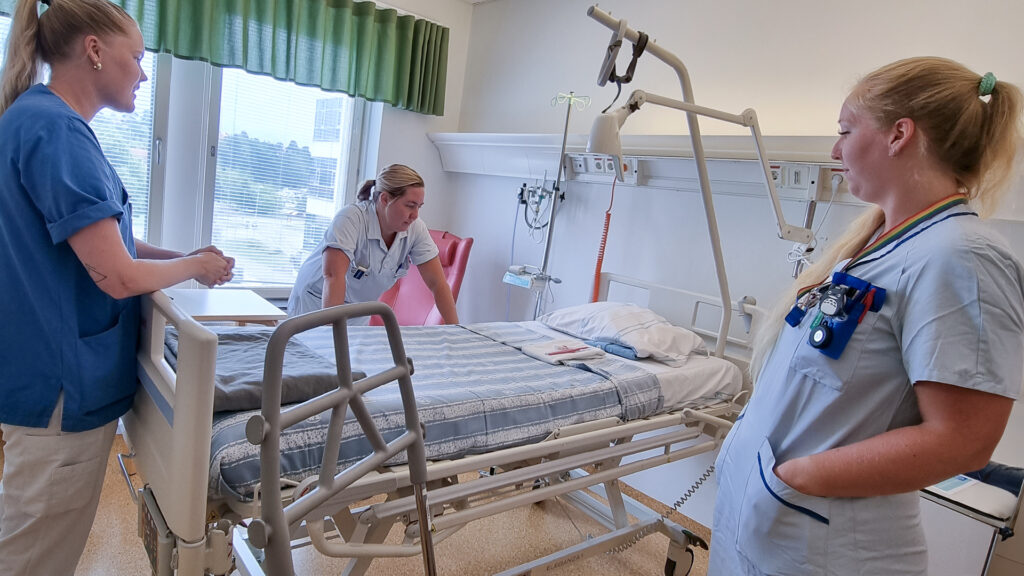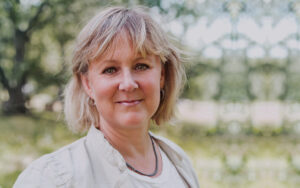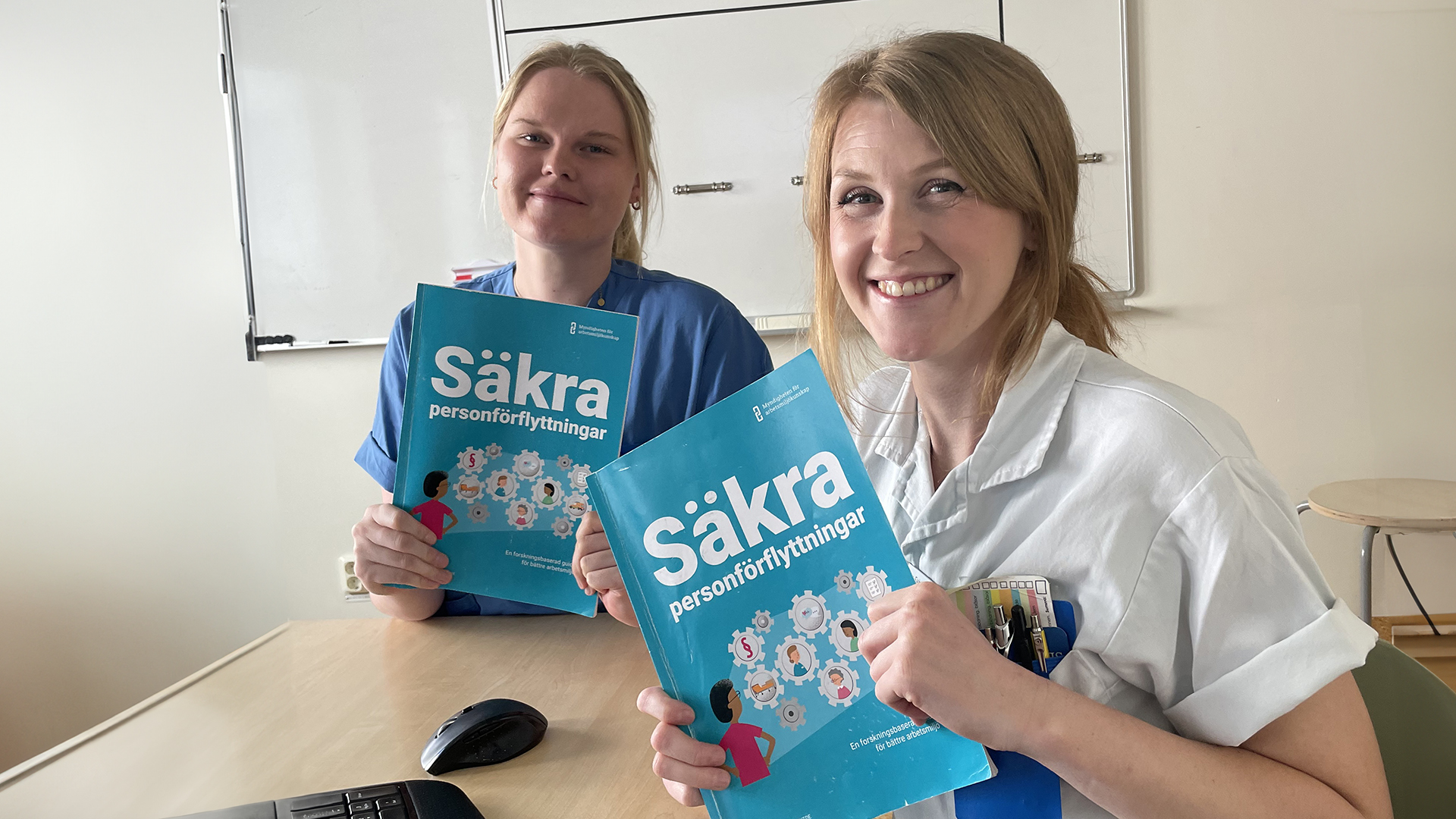The most common cause of load accidents is lifting and moving, and women are most at risk. The Lung Department O121 at the Cancer and Pulmonary Care Unit in Region Östergötland chose to participate in a research study, the Patient and Workers Safety Study (PAWSS). Since 2023 they are working both strategically and practically to ensure that the patient handling and movement are safe for both patients and staff. The basis of the work is the guide Safe patient handling and movement – a Research-based Guide for a Better Working Environment, which was prepared to reduce strain accidents in the workplace. It is available for managers, employees and safety representatives, and the focus of the guide is on practical work through a work process in five steps.
– The guide and the work on the implementation of safe patient handling and movement have increased interest and commitment when it comes to planning and movements, says Sabina Wallman, assistant nurse at the Cancer and Lung Health Unit in Region Östergötland.
Today, patients are an important resource in the department when it comes to patient handling. They are involved before, during and after transfers to a greater extent than before and also receive more information and knowledge about aids and the importance of sufficient space.
Several Professions in Collaboration for Good Implementation
For a good implementation process, a group consisting of people from several different professions was appointed, including operations manager, nurse, assistant nurse and occupational physiotherapist. Anette Grahn works as operations manager in the department and thinks that the guide and the research project itself have contributed to a better working environment.
– For us, it has been very rewarding and strengthened cooperation within the multiprofessional team and the person-centred care. It has also created active learning in everyday life and increased interest in operational research, she says.

The Planning Before Moving Takes Place with the Patient
A transfer is planned together with the patient and everyone makes sure that the right aids are used and are in the care room.
– As a manager, I have been given the opportunity to ensure patient handling from a systems perspective and have really been given the tools to deepen my and the employees’ knowledge of legislation, work environment and safety culture. Together, we have developed the systematic work environment work during the year and put into words how we can work together with patient and staff safety in the premises we have, says Anette Grahn.
Popcorn and a Feeling of Cinema
Sabina Wallman works as a assistant nurse in the Lung Department and, together with specialist nurse Mathilda Westerling, has been given the opportunity to lead and plan the implementation work. For example, she made sure to create a cinema feeling with popcorn at the information sessions, which made them special and got the employees to participate, listen and have fun.
Sabina Wallman and Mathilda Westerling designed a wheel of the year for how they thought the implementation would go. They performed fall risk assessments on the patient group on four occasions using the fall risk identification tool, DFRI, which they use daily at the department.
– What was new for us was the Dutch tool Tiltthermometer, which is used to assess risky loads on both patients and healthcare staff. We saw value in using these two risk assessments together to identify potentially risky loads and thus be able to work actively with preventive measures to avoid work-related injuries, says Sabina Wallman.

Get Inspired and Learn From Each Other
An important part of the practical work is about risk assessments and the Guide Safe patient handling and movement contains knowledge about how risk assessments that deal with the movement of people can be carried out. The majority of the department’s assistant nurses participated in a transfer training to get a better routine around handling and using aids, and one of their own instructors was trained in basic movement techniques.
– Now we plan our movements better and more thoughtfully, and in addition we are inspired and learn from each other. In premises where it is difficult to bring about any change, in cramped spaces in the patient wards for example, we make daily decisions and plan according to the conditions we have in order to achieve the safest possible movement of people, says Sabina Wallman.
Coaching of Authors of the Guide
Charlotte Wåhlin, work environment researcher at Occupational and Environmental Medicine Region Östergötland at Linköping University, has been project manager for the research project and for writing the guide. Together with Sebastian Buck, a PhD student at Linköping University, she has coached during and after the work with the implementation of safe patient handling and movement in the Lung Department.

– I am really impressed by the development work for safe patient handling of patients that Sabina Wallman, Anette Grahn and the team have carried out in the care department, both on an individual and organizational level. They have succeeded in engaging the entire department’s employees in important work environment issues with a focus on safety, says Charlotte Wåhlin.
Charlotte Wåhlin continues to work for more regions, municipalities and private actors to develop their way of working around safe patient handling and movement of people.
– Updated knowledge and commitment among managers and employees is a success factor in being able to pursue the issue of safe transfers of patients, so that neither patients nor employees are harmed, she says.
Five Things About the Guide Safe Patient Handling and Movement:
- Easy to apply
- The patients are involved before, during and after the transfer to a greater extent
- The patient-centred working method has been strengthened
- Patient movements have become safer
- Good cooperation and professional pride in the workplace
Read more about the Patient and Workers Safety Study
